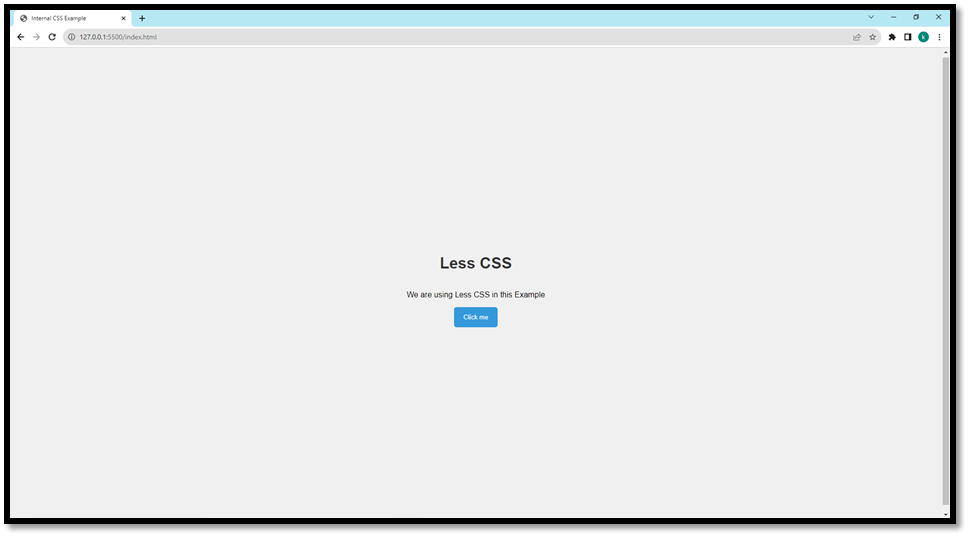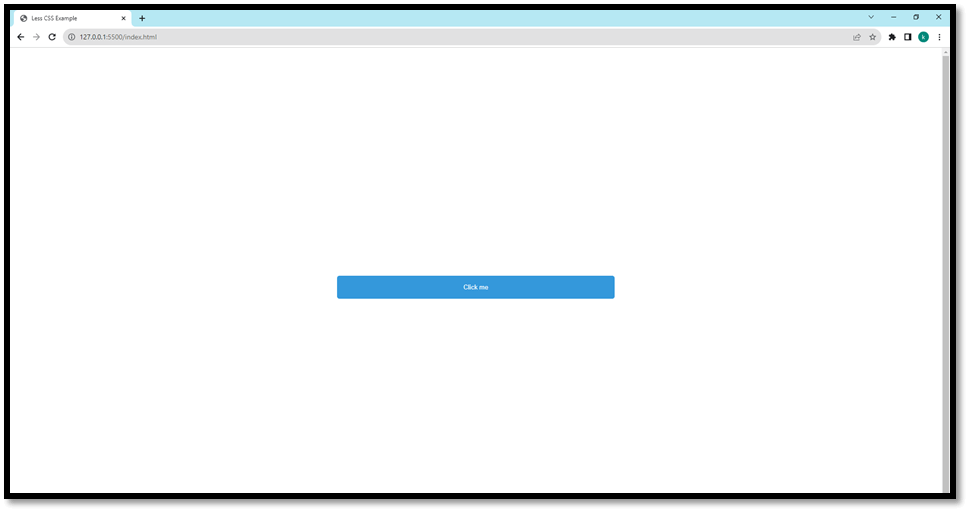Less CSS
Cascading style sheets (CSS) are essential in influencing a website's visual aesthetics in web development. Managing and maintaining CSS may become difficult whenever projects grow in size and complexity. This is where pre-processor languages like Less come in. Less is a dynamic stylesheet language that extends the functionality of traditional CSS, making it more streamlined and easier to manage. We shall go into the essence of Less, its core characteristics, and the benefits it provides to web developers.
Understanding Less
Less is a language extension for CSS that maintains compatibility with its predecessor. This implies that any legitimate CSS code is equally valid in Less. It brings forth functionalities such as variables, nesting and functions, hence providing developers with the capacity to craft stylesheets that are both easier to manage and well-structured.
Key Features of Less
1. Variables: The property to use the variables is the most strong feature of Less. Variables allow developers to define reusable values used in all stylesheets, such as colour or font size. This helps keep consistency and makes updating styles around the whole project easy.
HTML Code:
Less CSS Code:
Output:

2. Nesting:
Less allows for the nesting of selectors, which mirrors the structure of the HTML. This makes the code more readable and helps visualize the style hierarchy.
HTML Code:
Less CSS Code:
Output:

3. Mixins:
Mixins are reusable pieces of code that can be included in other rules. This enables developers to apply multiple styles to multiple selectors, reducing redundancy.
HTML Code:
Less CSS Code:
Output:

Advantages of Using Less CSS
- Variables: By using variables for commonly used values like colours and font sizes. It becomes easier to update styles across the entire project, ensuring consistency.
- Nesting: Nesting selectors mirror the HTML structure, thus making the code more intuitive and easier to follow. This helps developers visualize the hierarchy of styles.
- Mixins: Mixins allow developers to reuse sets of styles and reduce the need to duplicate the code. This promotes cleaner and more efficient stylesheets.
Operations and Functions:
Less supports mathematical operations and enables dynamic style calculations. This can be particularly useful for responsive design and layout adjustments.
- Imports: By splitting stylesheets into smaller and manageable files and importing them, developers can create a more organized and modular codebase.
- Backward Compatibility: Since Less is a superset of CSS, existing CSS code can be directly incorporated into fewer files without modification.
- Large Community and Ecosystem: Less has a robust community and a wide range of resources and includes documentation and forums with plugins, which can be invaluable for developers seeking assistance or additional functionality.
- Browser Compatibility: Less-generated CSS is compatible with all modern browsers and ensures consistent rendering across different platforms.
Disadvantages of Using Less CSS
- Learning Curve: Developers new to Less may face a learning curve in understanding and effectively utilizing its advanced features, especially if unfamiliar with pre-processing languages.
- Compilation Overheads: Using Less requires an extra step in the development process - compiling the Less files into standard CSS. This can add complexity to the build process.
- Potential for Overuse: While nesting can improve readability, excessive nesting can lead to overly specific selectors, hindering maintainability and leading to style conflicts.
- Debugging Challenges: When inspecting styles in a browser's developer tools, it may be more challenging to trace back the original Less code due to the compilation process.
- Tool Dependency: Developers must ensure that a Less compiler is available in their development environment, which might not be as straightforward in some setups.
- Performance Considerations: Depending on the size of the project and the compilation step from Less to CSS, it can introduce a slight delay in the development workflow.
- Potential for Code Bloat: While mixins can reduce redundancy, and excessive use can lead to bloated stylesheets if not managed carefully.
- Limited Native Support: Unlike CSS, which is natively supported by browsers, Less requires compilation before web browsers can interpret it.
| 


 For Videos Join Our Youtube Channel: Join Now
For Videos Join Our Youtube Channel: Join Now










